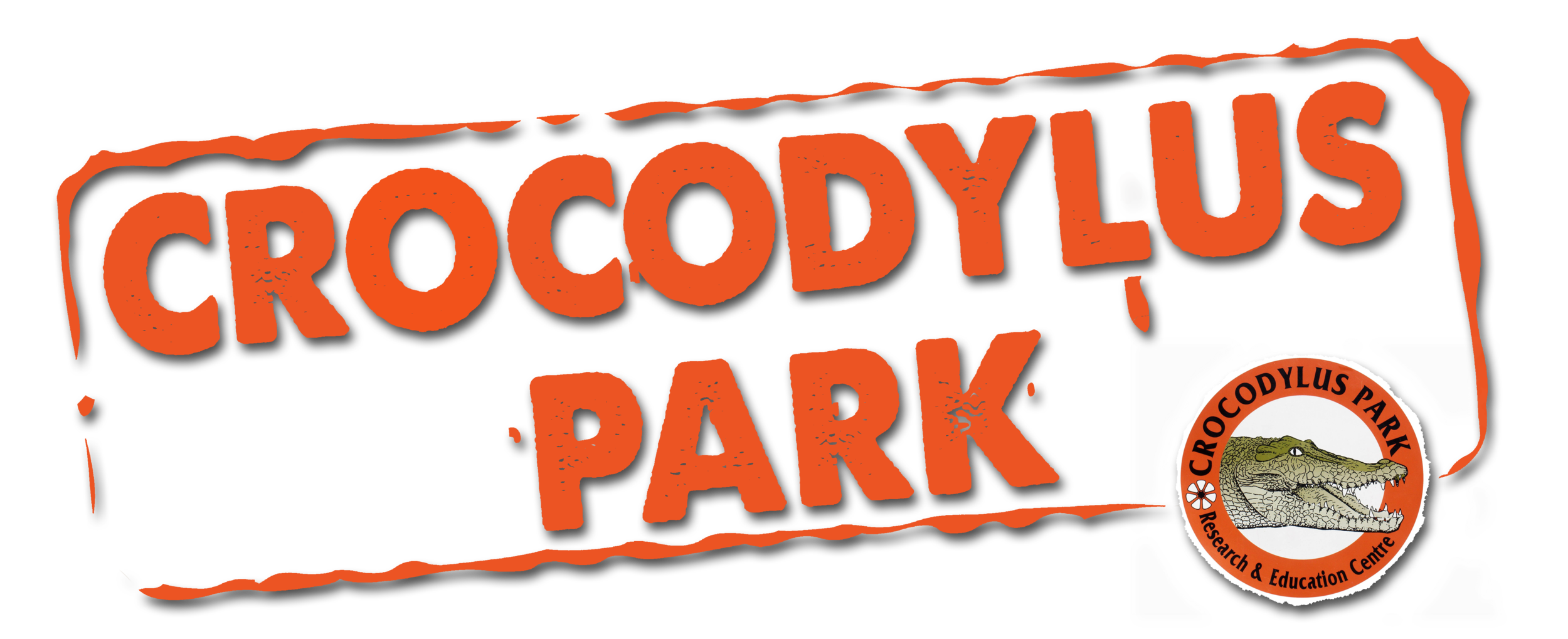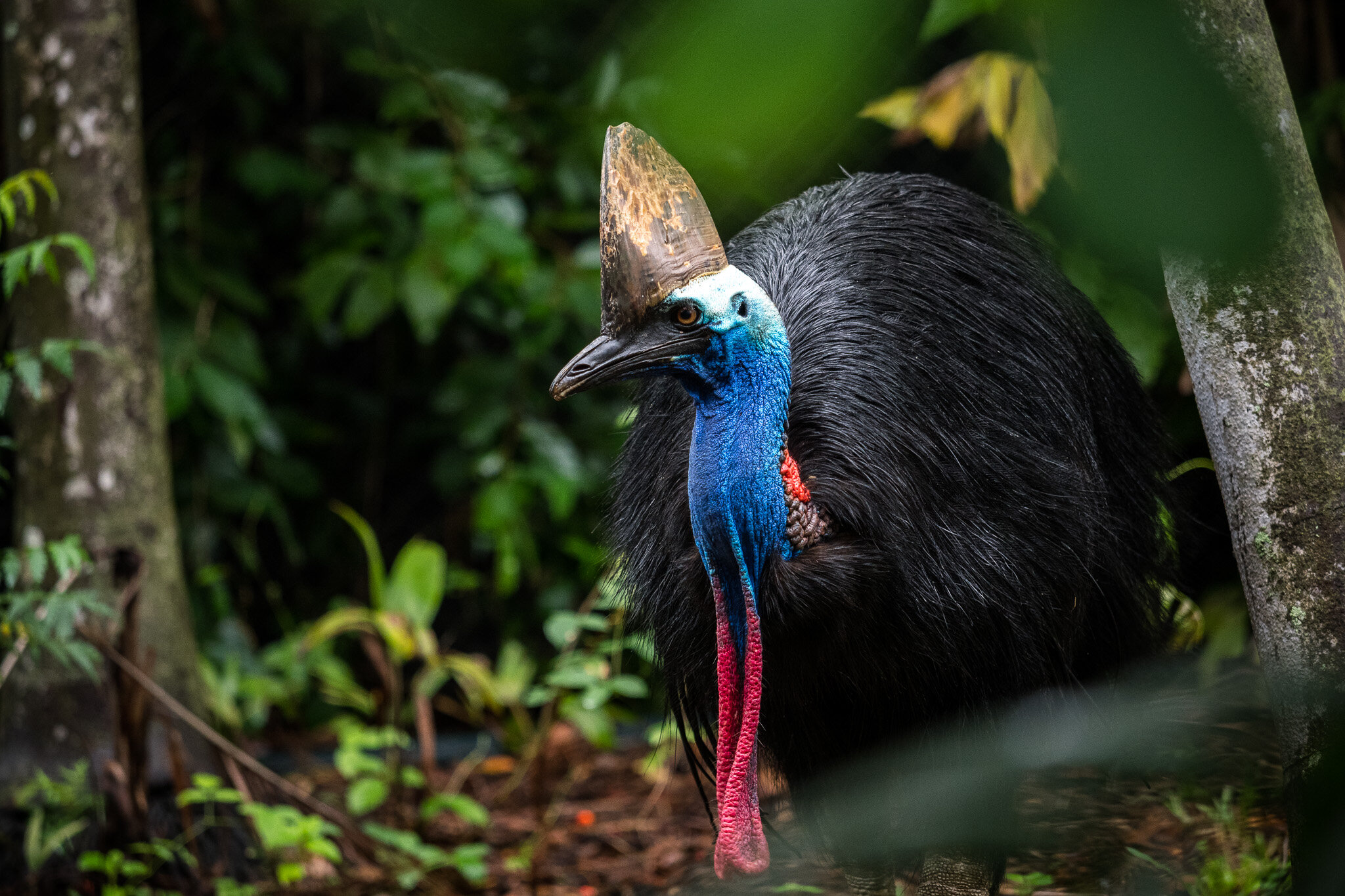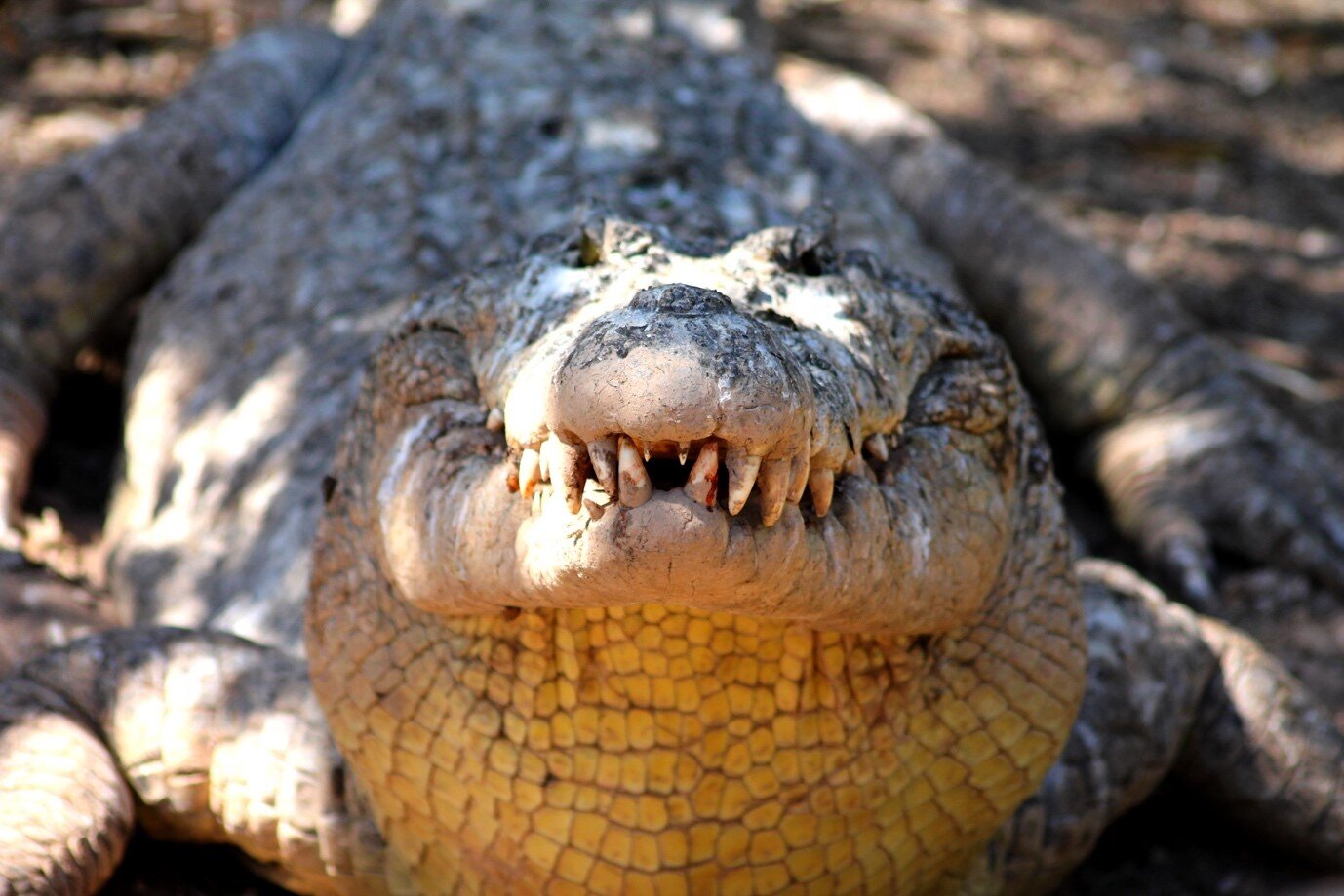Birds
Crocodylus Park is home to an array of different bird species native to Australia. Major Mitchels, Bush Stone Curlews, Jabiru, Muscovey Duck, Peafowl and more. These different species can be spotted throughout the park.
Bush Stone Curlew
A ground dwelling bird, the Bush Stone Curlew has a distinct eerie high pitch wailing call! Often heard at night time when the bird is most active, a chorus like affect takes place with different individuals calling together. They have a wide range diet of mostly insects, small mammals, lizards and seed. The court ship dance is a spectacular display of stomping feet, wings spread, and their neck stretched out! Phil, dev and bobby our family flock can often be seen nuzzled up together.
Cassowaries
Cassowaries are the world's second heaviest bird! Native to Northern Queensland, the Cassowary boasts beautiful bright coloured heads, with shining protective black body feathers. These body feathers provide protection against the challenging environments of dense thorny rainforest.
Emus
Found widely distributed across Australia, this flightless bird boasts big long legs and neck!
Our cheeky trio Jeremy, Day and Josh can often be seen taking baths in their pond!
Jabiru
Australia’s only stalk bird, the Jabiru can often be seen around warmer coastal climates. The Jabiru tends to be a resident bird, often seen remaining the same area for extended periods of time. Feeding on a variety of smaller terrestrial and aquatic species, our Jabiru Juganar will often be seen perching in the water pond eating fish.
Magpie Goose
A famous top end bird, the Magpie Geese can be seen in huge flocks at the start of the build up season. The large colonies breed late in the wet season and are often seen flocking to mango farms to feed. Magpie geese nest close to wetland environments, with the nest being mostly constructed by the male bird. Our beautiful Magpie Goose is affectionately known as “duck duck”…and isn’t shy for scratches!
Major Mitchells
Affectionately known as the “pink cockatoo”, Major Mitchells are found across inland Australia from a variety of habitats. Often foraging during the day on a variety of native nuts, fruits and seeds, big groups can be seen flocking to water holes at dawn and dusk. Major Mitchells pair for life as mates and often return to the same breeding grounds yearly! Our cheeky pair can usually be seen causing mischief in the parrot enclosure.
Ostriches
The world's largest bird! Native to the African Savannah, the Ostrich can run up to 69km per hour thanks to their long legs!
Peafowl
Peafowls are a large ground dwelling bird who boast a loud trumpet sounding call. They have impressive tail feather that account for 60% of their total body length! The tail is a stunning mix of green, blues and yellows and is fanned up in an impressive mating courtship displays. There are two different species who are native to India and Indonesia. The park has a breeding pair whose babies roam around the park!
Reptiles
Crocodylus Park is home to a variety of reptiles, native and exotic. From Anacondas, Boa Constrictors, Reticulated Pythons, Corn snakes, Blue Tongue Lizards, Black Headed Pythons, this is the spot to learn all about are scaled, slinky friends.
Black Headed Python
Native to the northern parts of Australia, the Black Headed Python is a very unique looking snake. As the name suggests, the python displays a black head and neck, with a contrasting brown, yellow and orange banding. Growing up to 3m, the snakes diet consists of lizards, other snakes, small birds and mammals. “Henry” our 2.m Black Headed Python will often make appearances in our reptile handlings!
Boa Constrictor
Native to South America, the Boa Constrictor displays a various range of impressive markings! Depending on what type of habitat they are trying to camouflage into, their patterns can vary greatly with shapes and colours of green, yellow, red and brown. Females give birth up to 60 live young at a time who are roughly 60cm long. “Baby boa” can be seen in our reptile area next to the Anaconda!
Burmese Python
Native to South-East Asia, the Burmese Python can be found in jungles and marshy environments. Reaching impressive sizes of up to 7m long and weight up to 92kg, the python has become a popular choice of exotic pet, especially in America. Their diet consists of mammals, birds and rodents. “Princess Bari” is our 24-year-old resident Burmese Python in the park. If you are lucky enough you may see her out on the grass with staff members while she goes for an explore in the sun!
Corn Snakes
Native to pineland and woodlands in South-East United states, the Corn Snakes are comprised of many subspecies. Corn Snakes have impressive colours comprised of a huge variety in individuals ranging from a mix of orange, red, yellow patterned top with a white underbelly. A smaller snake of roughly 1m, they tend to pray on small birds, lizards and mammals.
Green Anaconda
Anna our anaconda can often be spotted enjoying her waterfall or in her pond. Apart of the boa family, the green anaconda is the heaviest snake in the world! While the reticulated python reaches greater lengths, the anaconda can reach twice a Reticulates girth and weight of up to 550kg. Native to South America in the amazon, the anaconda will be found in aquatic environments.
Green Iguana
Native to South America, the Green Iguana can be found in tropical rainforests. A prehistoric looking creature with a spiney back, their long claws assists in climbing to the treetops. Mostly herbivores, the Green Iguanas diet consists of fruit, flowers, leaves and the occasional insects and snails. Growing to 1.5m long, their long tails are used like whips as a defense against predators.
Reticulated Python
The longest snake in the world! Their beautiful markings assist the Reticulated Python to camouflage into the leaf litter of the forest floor. A diet of birds and mammals as large as pigs and deer, the python uses its long curved teeth and constricting abilities to secure its prey! Due to their large size, the pythons are often waiting on the forest floor for its next meal. Native to tropical rainforests of the Indo-Pacific, South-East Asia and Bangladesh…but! you can meet Reggie our beauty retic at the park.
Mammals
Banteng Cattle
Bull and Molly are our resident Banteng, a species of wild Cattle native to Southeast Asia. Banteng, means ‘old bull’ in Indonesian, and they are often observed licking each other as a form of bonding.
Asian Water Buffalo
Sandy and Jessie, our two resident Asian Water Buffalo, can often be found swimming in their wallow. They have wide-spread set hooves to prevent them sinking into the mud,and make a very interesting little squeaking and quacking noises!
Maned Wolves
Maned wolves are native to South America. They have fox like appearances, with stilt like long legs to help them travel long distances
Dingo
A famous dog to Australia, the dingo is considered descendants of the Asian Dingo that was introduced. Often seen playing in their waterfall and ponds, or out for walk, Wallagu, Alkina and Yera Junior are our cheeky dingo trio.
Agile Wallaby
A wallaby native to Northern Australia, Agile Wallabies can often be observed in solitary or in large groups grazing. Agile Wallabies can often be identified by a distinctive white stripe that runs from under their eye down to their snout.
Red Kangaroos
The largest marsupial, Red Kangaroos can be found distributed across Australia’s central environments. Usually found in ‘mobs’ of ten or so, these kangaroos can travel large distances in drought to find water sources.
Meerkats
Native from South Africa, Meerkats live in large groups called ‘mobs’ and have great communication with vocalisation. This cheeky mob provide endless entertainment to guests and handlers.
Timor Ponies
Native to Timor Indonesia, these ponies are small and agile. The species was brought into Australia to be utilized on the gold rush fields and some released into the wild after sites finished.
Serval
A medium slender cat Native to South Africa, the Serval is a solitary animal. Servals have exceptional hearing and can even hear their prey moving underground!
Monkeys
Common Marmosets
Native to South America, Marmosets are highly social small monkeys with a long-banded tail. Tree dwelling primates that like to hop, skip, jump, flip, twirl and leap their way around the tree tops, Marmosets live for approximately 10 years in the wild and 16 years in captivity.
Baboons
From the hills of South Africa, Baboons live a very complex social life! With groups of several hundred, they can often be seen hunting, grooming and monkeying around with each-other.
Cotton Top Tamarins
This critically endangered species, native to South America are truly a unique species! Cotton Top Tamarins are highly vocal, their hair on their heads stands up when they’re excited, and they mostly give birth to twins!
Black Capped Capuchin
Native to the Amazon Basin in South America, Blacked Capped Capuchins live in groups of up to 30. Famous for their facial expressions, Capuchins have a wide variety of expressions full of character! When an individual raises their eyebrows, it is an indication of flirting!
Big Cats
Zuri and Araali
Zuri and Araali are our two white African lion brothers. At four years old, they have a rare genetic recessive trait that causes their white skin colouration. This trait is known as being Leucistic, and unlike the albino trait, Leucistic animals still have blue or gold eyes not red and have darker facial features. The Leucistic lions also display a variation of mane colours.































